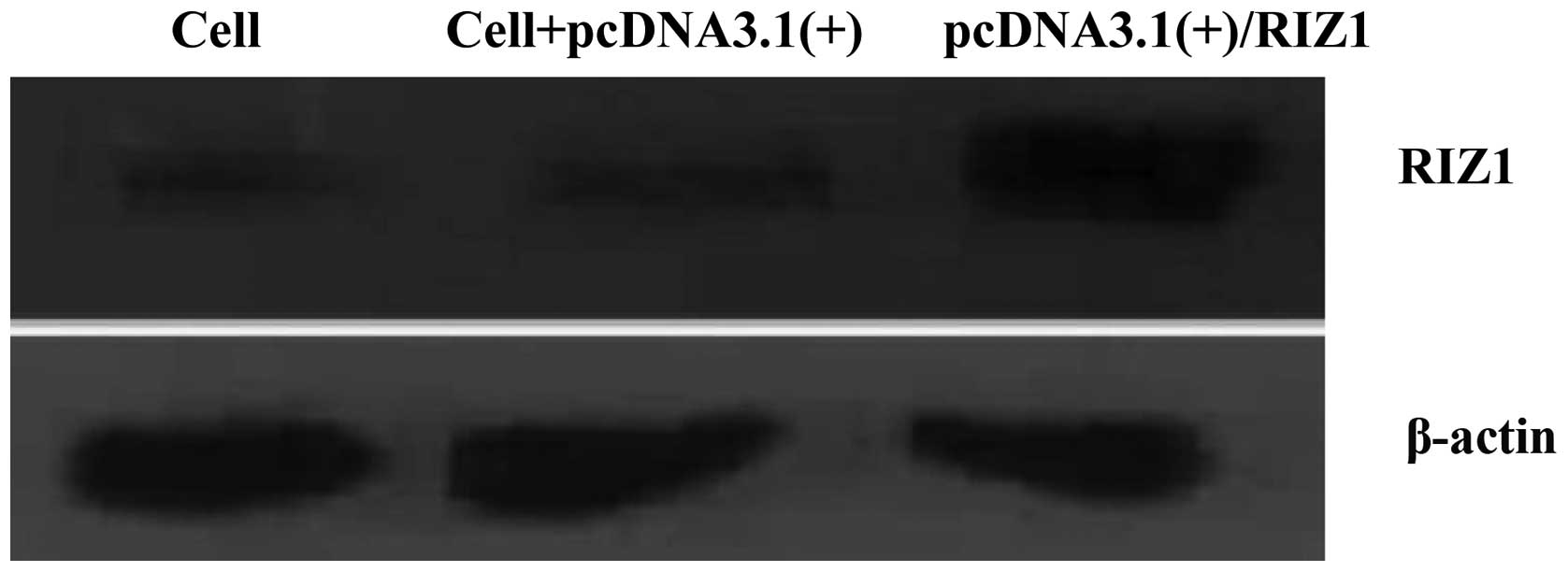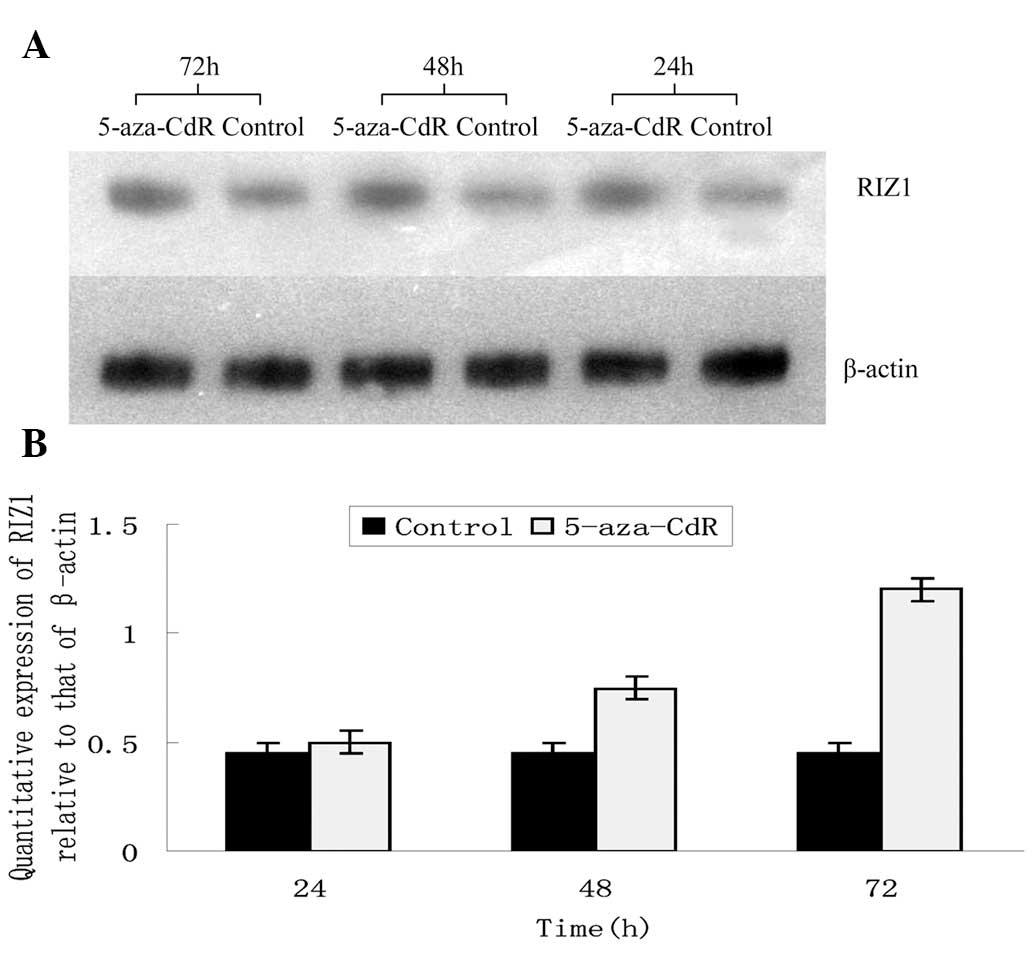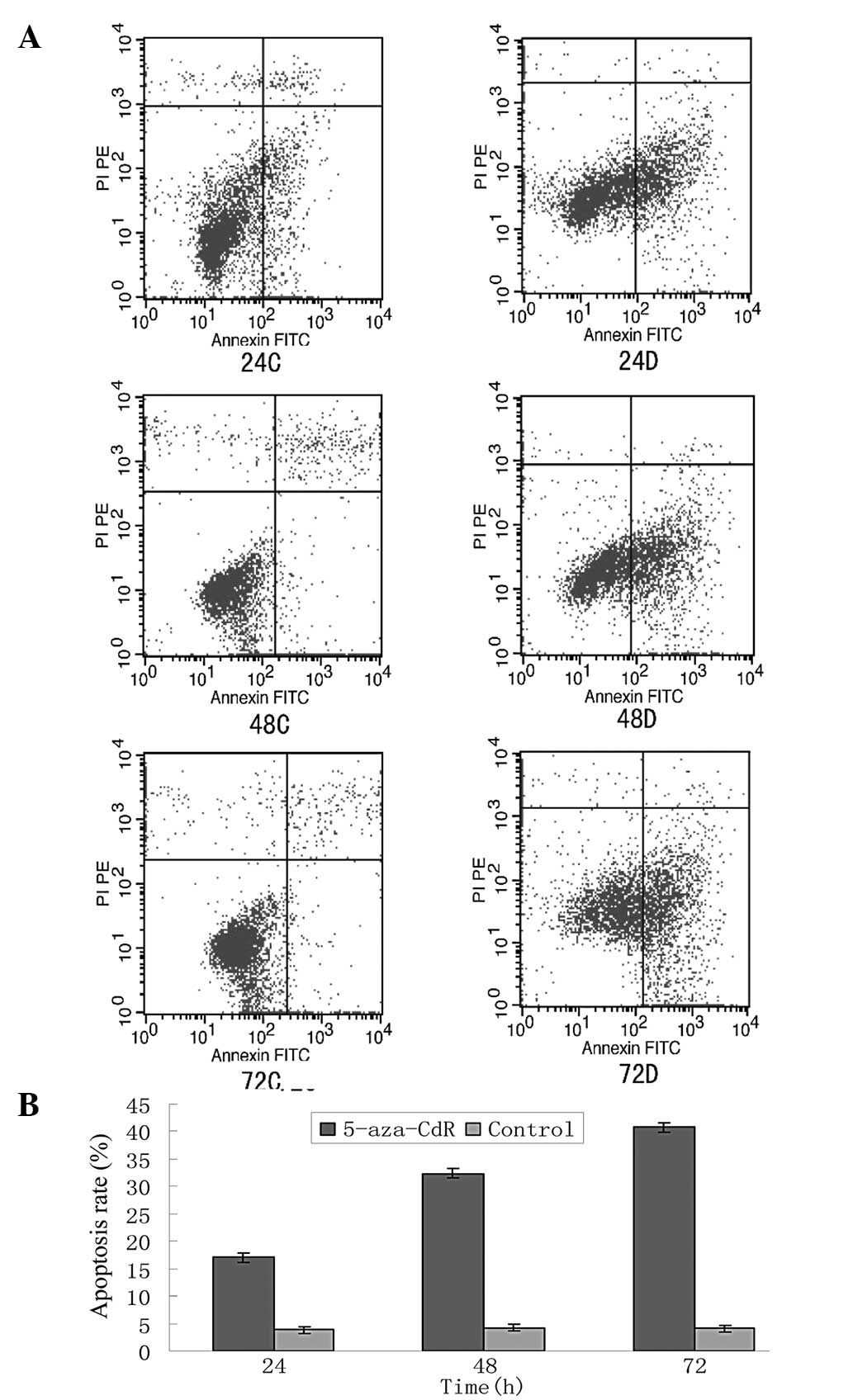|
1
|
Amin HM, Hoshino K, Yang H, Lin Q, Lai R
and Garcia-Manero G: Decreased expression level of SH2
domain-containing protein tyrosine phosphatase-1 (Shp1) is
associated with progression of chronic myeloid leukaemia. J Pathol.
212:402–410. 2007. View Article : Google Scholar
|
|
2
|
Takeno S, Yamashita SI, Yamamoto S,
Takahashi Y, Moroga T, et al: Number of metastasis-positive lymph
node stations is a simple and reliable prognostic factor following
surgery in patients with esophageal cancer. Exp Ther Med.
4:1087–1091. 2012.PubMed/NCBI
|
|
3
|
Dong SW, Cui YT, Zhong RR, Liang DC, Liu
YM, Wang YG, He Z, Wang S, Liang SJ and Zhang P: Decreased
expression of retinoblastoma protein-interacting zinc-finger gene 1
in human esophageal squamous cell cancer by DNA methylation. Clin
Lab. 58:41–51. 2012.PubMed/NCBI
|
|
4
|
Dong SW, Zhang P, Liu YM, et al: Study on
RIZ1 gene promoter methylation status in human esophageal squamous
cell carcinoma. World J Gastroenterol. 18:576–582. 2012. View Article : Google Scholar : PubMed/NCBI
|
|
5
|
Klintschar M and Neuhuber F: Evaluation of
an alkaline lysis method for the extraction of DNA from whole blood
and forensic stains for STR analysis. J Forensic Sci. 45:669–673.
2000.PubMed/NCBI
|
|
6
|
Dean DA and Gasiorowski JZ:
Liposome-mediated transfection. Cold Spring Harb Protoc.
2011:prot55832011.PubMed/NCBI
|
|
7
|
Buyse IM, Shao G and Huang S: The
retinoblastoma protein binds to RIZ, a zincfinger protein that
shares an epitope with the adenovirus EIA protein. Proc Natl Acad
Sci USA. 92:4467–4471. 1995. View Article : Google Scholar : PubMed/NCBI
|
|
8
|
Ng WT, Choi CW, Lee MC, Chan SH, Yau TK
and Lee AW: Familial nasopharyngeal carcinoma in Hong Kong:
epidemiology and implication in screening. Fam Cancer. 8:103–108.
2009. View Article : Google Scholar : PubMed/NCBI
|
|
9
|
Szende B and Tyihák E: Effect of
formaldehyde on cell proliferation and death. Cell Biol Int.
34:1273–1282. 2010. View Article : Google Scholar : PubMed/NCBI
|
|
10
|
Overmeer RM, Louwers JA, Meijer CJ, van
Kemenade FJ, Hesselink AT, et al: Combined CADM1 and MAL promoter
methylation analysis to detect (pre-)malignant cervical lesions in
high-risk HPV-positive women. Int J Cancer. 129:2218–2225. 2011.
View Article : Google Scholar : PubMed/NCBI
|
|
11
|
Overmeer RM, Henken FE, Snijders PJ,
Claassen-Kramer D, Berkhof J, et al: Association between dense
CADM1 promoter methylation and reduced protein expression in
high-grade CIN and cervical SCC. J Pathol. 215:388–397. 2008.
View Article : Google Scholar : PubMed/NCBI
|
|
12
|
Brait M, Ford JG, Papaiahgari S, Garza MA,
Lee JI, et al: Association between lifestyle factors and CpG island
methylation in a cancer-free population. Cancer Epidemiol
Biomarkers Prev. 18:2984–2991. 2009. View Article : Google Scholar : PubMed/NCBI
|
|
13
|
Schoenhals M, Kassambara A, De Vos J, Hose
D, Moreaux J and Klein B: Embryonic stem cell markers expression in
cancers. Biochem Biophys Res Commun. 383:157–162. 2009. View Article : Google Scholar : PubMed/NCBI
|
|
14
|
Zhang S, Balch C, Chan MW, Lai HC, Matei
D, et al: Identification and characterization of ovarian
cancer-initiating cells from primary human tumors. Cancer Res.
68:4311–4320. 2008. View Article : Google Scholar : PubMed/NCBI
|
|
15
|
Chen L, Ling BB, Alcorn J and Yang J:
Analysis of the expression of human N-myristoyltransferase 1
(hNMT-1) in cancers. Open Biomarkers J. 2:6–10. 2009. View Article : Google Scholar
|
|
16
|
Dalerba P, Cho RW and Clarke MF: Cancer
stem cells: models and concepts. Annu Rev Med. 58:267–284. 2007.
View Article : Google Scholar : PubMed/NCBI
|
|
17
|
Noman AS, Koide N, Iftakhar-E-Khuda I,
Dagvadorj J, Tumurkhuu G, et al: Retinoblastoma protein-interacting
zinc finger 1 (RIZ1) participates in RANKL-induced osteoclast
formation via regulation of NFATc1 expression. Immunol Lett.
131:166–169. 2010. View Article : Google Scholar : PubMed/NCBI
|
|
18
|
Philippidis A: Gene therapy briefs. Hum
Gene Ther. 23:1221–1223. 2012. View Article : Google Scholar
|
|
19
|
Dong SW, Ma L, Xu N, Yan HQ, Liu HY, Li YW
and Zhang P: Research on the reactivation of Syk expression caused
by the inhibition of DNA promoter methylation in the lung cancer.
Neoplasma. 58:89–95. 2011. View Article : Google Scholar : PubMed/NCBI
|
|
20
|
Moran NL: First gene therapy approved. Nat
Biotechnol. 30:11532012. View Article : Google Scholar
|
|
21
|
Fujita J, Crane AM, Souza MK, Dejosez M,
Kyba M, et al: Caspase activity mediates the differentiation
ofembryonic stem cells. Cell Stem Cell. 2:595–601. 2008. View Article : Google Scholar : PubMed/NCBI
|
|
22
|
Yu J, Vodyanik MA, Smuga-Otto K,
Antosiewicz-Bourget J, Frane JL, et al: Induced pluripotent stem
cell lines derived from human somatic cells. Science.
318:1917–1920. 2007. View Article : Google Scholar : PubMed/NCBI
|
















